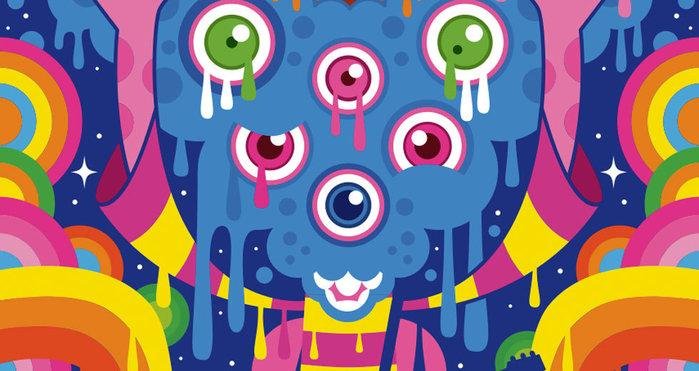The Weird One: Jefferson Airplane’s “After Bathing At Baxter’s”
Sam Backer revisits the strange and thrilling 1967 album from the psychedelic icons
The Weird One is an irregular column on RBMA Daily in which a writer takes a look at an outlier in a band’s catalogue. Album, single, movie role: This column celebrates the moment when a band gets weird.
.ad2a6a78.jpg?auto=format&w=700)
The year 1967 saw the emergence of an entire new wave of American rock, much of which centered around the San Francisco scene of bands like Moby Grape, Country Joe and the Fish, The Grateful Dead and the Quicksilver Messenger Service. And within this cohort, no group showed more promise, exerted more influence or found more early success than Jefferson Airplane.
Airplane, signed to RCA, started the year with a record already under its belt, 1966’s Jefferson Airplane Takes Off. Its gently twisted folk-rock had received decent reviews but hadn’t sold much of anything. That wouldn’t hold true for Surrealistic Pillow, the group’s second album. Released in February, it shot to the top of the charts, hitting No. 3 on the strength of the singles “Somebody To Love” and “White Rabbit.” It was, for many, the first accessible record that truly reflected the intensity of the burgeoning hippy scene, leaving the sweeter, folkier releases that preceded it in its electric dust.
Plenty of groups have talked about being made up of equals, but few have lived it the way Airplane does on this record.
In the years since, those two singles have become calling cards for the ’60s more generally. Appearing in movies or on TV, they function as stand-ins for the broader moment, conjuring images of fringed jackets, headbands and light shows. But while Surrealistic Pillow has some exceptional tracks, as an album, it’s hit and miss. People often forget the warmed-over pop of “My Best Friend” or the shockingly unconvincing blues of “Comin’ Back To Me.”
More importantly, in its concision and control, Surrealistic Pillow was a far cry from the darker, heavier, riskier sound the group had been developing live. That Jefferson Airplane is heard, with remarkable power and engrossing sprawl, on After Bathing At Baxter’s, the second album the group released in 1967. A product of the free hand and nearly unlimited studio time granted to the band after the chart success of Surrealistic Pillow, the album is organized into four suites, its separate tracks flowing seamlessly into one another.
Within each suite, the group’s various songwriters (there were four, each with a distinct and recognizable voice), were given room to stretch and experiment. The result is a glorious mess, one that not only captures the many, often contradictory sonic trends of its moment, but that provides a window into a band that is far stranger and heavier than Surrealistic Pillow suggests. It explains why, during these years, listeners like Rolling Stone’s Jann Wenner believed that Airplane could be “the best rock & roll band in America.”
Baxter’s is, without a doubt, a record of many flaws – its jams can go on too long, its sequencing is uneven, and those oh-so-hip-at-the-time sound collages haven’t aged particularly well. It’s also a remarkably sloppy record; vocals often run askew, full band hits are fudged and the drumming occasionally runs aground. Yet, in a lot of ways, the album is a thrilling listen because – not in spite – of these problems.
Take “The Last Wall of the Castle,” whose tightly-packed, half-spoken lyrics and soul-influenced chords reveal very real connections with the Nuggets-style garage rock then bubbling out of college towns across America. Where a garage band would stick tightly, head down, to the beat and song structure, the Airplane’s rhythm section struggles to break free, pulling the band into a thrilling middle ground between jam and song, the driving rhythm fraying into a heaven of skidding, slicing guitars. The record isn’t precise because the band isn’t going for precision – instead, it’s the sound of a rough democracy in living action. Plenty of groups have talked about being made up of equals, but few have lived it the way Airplane does on this record.
That freedom is particularly important because it gave Grace Slick, whose powerful vocals did so much to distinguish the group’s sound, the space to come into her own as a songwriter and agent provocateur. Although Slick had already scored heavily with the generation-baiting “White Rabbit,” the revolutionary feminism displayed on tracks like “Rejoyce” or the vicious social portrait of “Two Heads” mark her emergence as a fully mature force.
Freedom is also the best word to describe what is arguably Baxter’s definitive track. In an age of overly indulgent jams, the dark, minimal grind of “Spare Chaynge” is astonishing, a bass-heavy excursion that slowly builds to a crescendo of pounding drums and circling guitar. As close to “free rock” as almost anything on record, the jam has a sense of space and style that reflects the band’s ballroom-honed chops. It conjures an aggressive, almost primal minimalism, resembling something from early Can or Hawkwind. Thrilling, heavy, and post-punk before its time, it’s truly remarkable that it got on record.
That sense of astonishment, repeated on track after track, is one of the enduring pleasures of the album. Clearly cut by the same band responsible for “Somebody To Love,” Baxter’s demonstrates a group whose sound has deepened immeasurably. Ultimately, in its perplexing diversity, detours and experiments, Baxter’s might be the better stand-in for what the ’60s actually were like. In it, you can hear a band at a crossroads, making something new while imagining a future different than our own.

